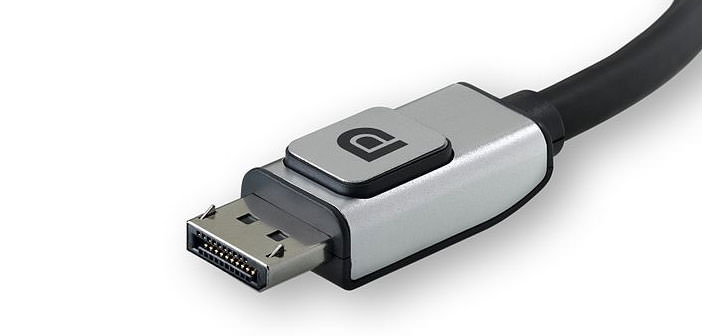VESA has published the standard DisplayPort 1.4, which expands the functionality and versatility of the audio-video data transport protocol and is preparing for HDR content, even Type-C USB.
The Video Electronics Standards Association (VESA) announced the publication of the standard DisplayPort (DP) version 1.4. This is the first major update since September 2014 when it was released version 1.3. The new features include support technology Display Stream Compression (SDC), with a compression ratio of 3: 1 with no perceivable loss in quality, according to tests carried out by the association.
DisplayPort 1.4 is designed to be implemented on high-end electronics products they intend to offer impeccable audio-video quality. It is an extensible protocol for the transport of audio and video data based on packets. Initially introduced as an external interface, over time it has been adapted to be inserted also on display integrated or embedded within other connectors, such as Thunderbolt or the recent USB Type-C reversible.
Thanks to the Multi-Transport Stream Technology (MST) can also ensure support for multiple high resolution monitors on a single interface. DisplayPort 1.3 has been the basis for the new version: presented just over a year ago, it increased the maximum bandwidth to 32.4 Gbps, with each of the four channels that transferred data at a rate of 8.1 Gbps.
The improved version of the flexibility of the protocol, which could then be integrated on other connectors via the DisplayPort Alt Mode. DisplayPort 1.3 also supported maximum resolution of 5,120 x 2,880 pixels and allowing the simultaneous use of two 4K Ultra HD monitor (3,840 x 2,160).
DisplayPort 1.4 is based on these characteristics, improving them and adding new ones. The use of new compression allows you to use in a more optimized USB Type-C connector, enabling the ability to play video at even higher resolution, even in HDR mode, and take advantage of SuperSpeed USB technology. The new standard can support 8K resolution at 60Hz with HDR, or 4K 120Hz, always with HDR.
Among other features VESA announces: FEC, Forward Error Correction; HDR transport destination that uses a secondary data packet to provide support to the current CTA 861.3, which is useful for converting from DP to HDMI 2.0a or to support future dynamic HDR standards; Expanded audio transport, such as 32-channel audio with sample rate of 1,536 KHz.

